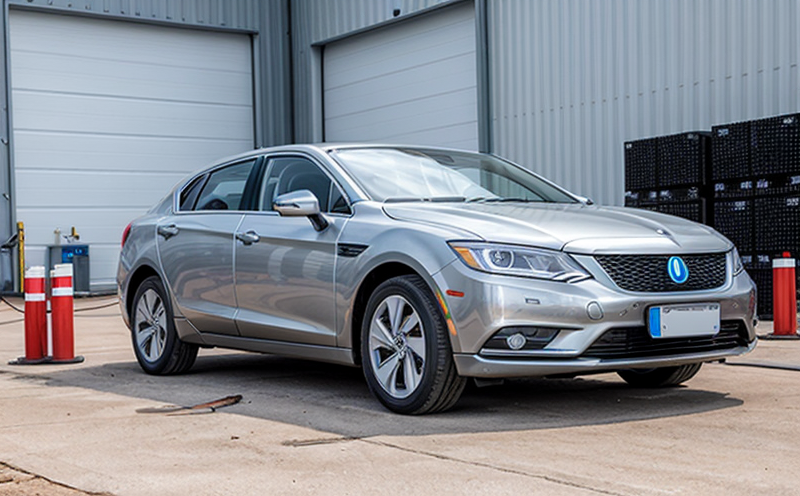IEC 61427 NiMH Battery Testing for Renewable Energy Storage Applications
The International Electrotechnical Commission (IEC) standard IEC 61427 is a comprehensive document that provides detailed guidelines and procedures for the testing of nickel-metal hydride (NiMH) batteries. This service focuses specifically on ensuring compliance with these standards, particularly in applications where NiMH batteries are used as a critical component within renewable energy storage systems.
Renewable energy sources like solar power and wind turbines generate electricity intermittently, which necessitates reliable energy storage solutions to balance supply and demand. NiMH batteries offer high efficiency, long cycle life, and low self-discharge rates, making them ideal for such applications. The IEC 61427 standard ensures that the battery performance meets stringent requirements, thereby enhancing safety, reliability, and durability.
Compliance with this standard is crucial for manufacturers, quality managers, compliance officers, R&D engineers, and procurement teams working in sectors where NiMH batteries are critical. By adhering to IEC 61427, organizations can ensure that their products perform consistently across different environmental conditions and meet international safety standards.
The testing process involves a series of rigorous procedures designed to evaluate the battery's performance under various operational scenarios. This includes high-rate discharge tests, deep charge-discharge cycles, low-temperature storage, and accelerated life tests. These tests are conducted using specialized equipment that simulates real-world conditions to provide accurate results.
Accurate specimen preparation is essential for reliable test outcomes. Specimens must be stored under controlled conditions before testing begins. The batteries are then subjected to a series of tests aimed at assessing their capacity retention, energy efficiency, and safety features. The results are meticulously documented and compared against the stringent acceptance criteria outlined in IEC 61427.
The use of this standard ensures that batteries perform reliably over extended periods, which is critical for renewable energy storage systems. By ensuring compliance with IEC 61427, organizations can enhance their reputation as providers of high-quality products and gain a competitive edge in the market.
Eurolab Advantages
At Eurolab, we pride ourselves on providing top-tier testing services that meet or exceed global standards. Our expertise in IEC 61427 NiMH battery testing is complemented by state-of-the-art facilities and experienced professionals who understand the nuances of this standard.
- Comprehensive Testing Capabilities: We offer a full range of tests required for compliance with IEC 61427, ensuring that our clients receive accurate and reliable results.
- Dedicated Resources: Our dedicated team of engineers and technicians is trained to handle the complexities of NiMH battery testing, providing clients with unparalleled support.
- Accurate Reporting: We provide detailed reports that are not only compliant but also easy to understand, ensuring transparency in every aspect of our service.
- Prompt Delivery: Our efficient processes ensure that tests are completed within the stipulated timeframes, minimizing downtime for clients.
Our commitment to quality and reliability is reflected in the numerous successful projects we have undertaken. We work closely with our clients to understand their specific needs and deliver tailored solutions that meet or exceed expectations.
Quality and Reliability Assurance
- High-Rate Discharge Tests: These tests simulate the battery's performance under high-current discharge conditions, ensuring it can handle peak loads without failure.
- Deep Charge-Discharge Cycles: This process evaluates the battery's ability to repeatedly charge and discharge over extended periods, assessing its cycle life and efficiency.
The quality assurance process involves not only conducting these tests but also ensuring that all equipment is calibrated according to international standards. Our testing facilities are equipped with precision instruments capable of measuring even the smallest variations in performance parameters. This level of accuracy ensures that any discrepancies can be identified and addressed promptly, leading to more reliable products.
Our team of experts continuously monitors the test results and compares them against established acceptance criteria. Any deviations from these standards are investigated thoroughly to determine their cause and effect on overall battery performance. By maintaining strict adherence to IEC 61427, we ensure that our clients receive batteries that perform consistently under all conditions.
Use Cases and Application Examples
- Solar Photovoltaic Systems: NiMH batteries are used in solar PV systems to store excess energy generated during daylight hours for use at night or during periods of low sunlight.
- Wind Turbine Energy Storage: In wind turbine applications, NiMH batteries can provide backup power when the grid is unstable or during maintenance intervals.
In addition to these primary use cases, NiMH batteries also find application in hybrid electric vehicles and portable electronic devices. Their ability to handle deep discharge cycles without significant capacity loss makes them a preferred choice for such applications.
When used in renewable energy storage systems, NiMH batteries must be tested rigorously to ensure they meet the stringent requirements set by IEC 61427. This ensures that these batteries can store and deliver power reliably over extended periods, enhancing the overall efficiency of the system.





